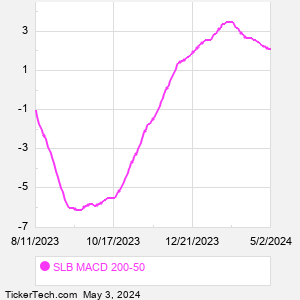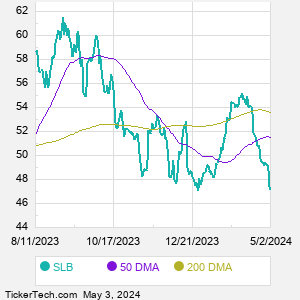Schlumberger is a technology company. Co. operates under four divisions: Digital and Integration, which combines Co.'s digital solutions and data products with its Asset Performance Solutions; Reservoir Performance, which develops and deploys technologies and services to evaluate, intervene, and stimulate reservoirs that help customers understand subsurface assets; Well Construction, which provides operators and drilling rig manufacturers with services and products related to designing and constructing a well; and Production Systems which provides equipment and services including subsurface production systems, subsea and surface equipment and services, and midstream production systems.
When researching a stock like Schlumberger, many investors are the most familiar with Fundamental Analysis — looking at a company's balance sheet, earnings, revenues, and what's happening in that company's underlying business. Investors who use Fundamental Analysis to identify good stocks to buy or sell can also benefit from SLB Technical Analysis to help find a good entry or exit point. Technical Analysis is blind to the fundamentals and looks only at the trading data for SLB stock — the real life supply and demand for the stock over time — and examines that data in different ways. One of those ways is to calculate a Simpe Moving Average ("SMA") by looking back a certain number of days. One of the most popular "longer look-backs" is the SLB 200 day moving average ("SLB 200 DMA"), while one of the most popular "shorter look-backs" is the SLB 50 day moving average ("SLB 50 DMA"). A chart showing both of these popular moving averages is shown on this page for Schlumberger. Comparing two moving averages against each other can be a useful visualization tool: by calculating the difference between the SLB 200 DMA and the SLB 50 DMA, we get a moving average convergence divergence indicator ("SLB MACD"). The SLB MACD chart, in conjunction with the chart of the moving averages, basically helps in visualizing how the moving averages are showing convergence (moving closer together), or divergence (moving farther apart). |



